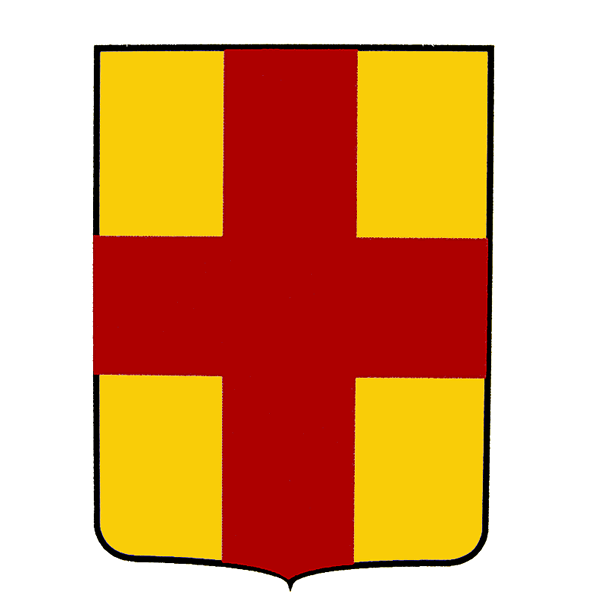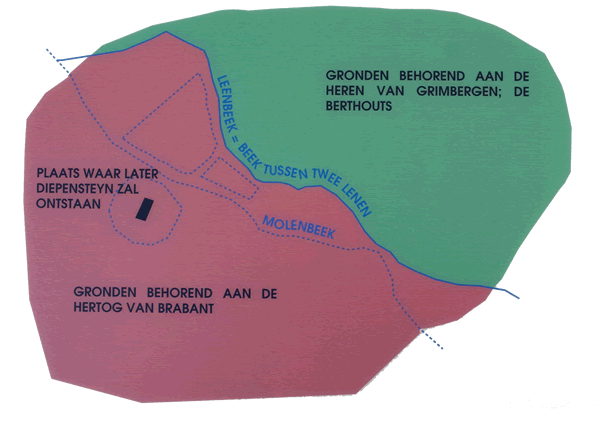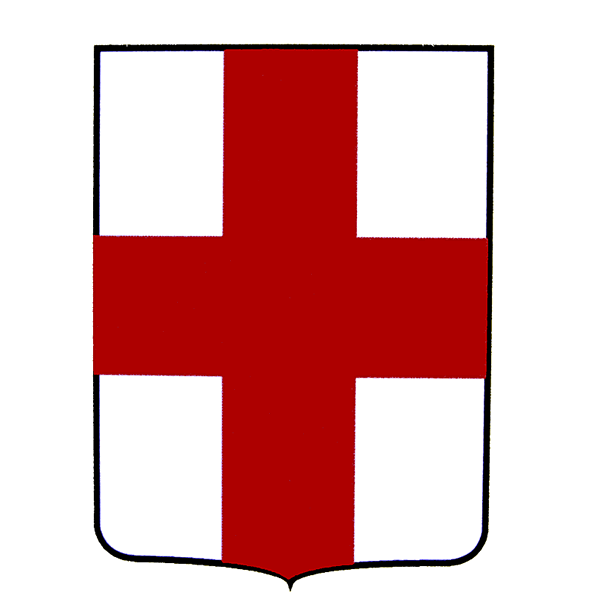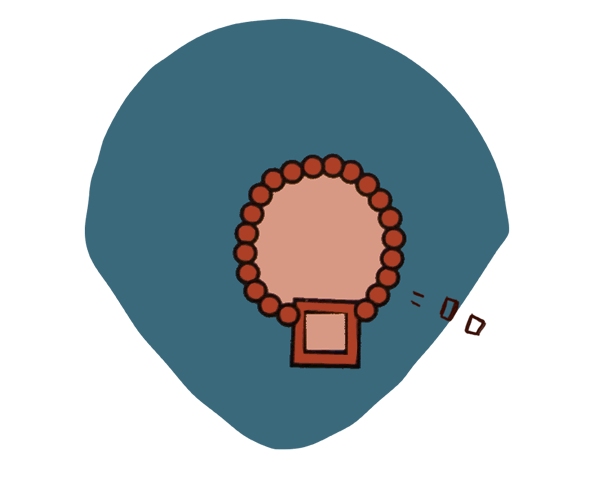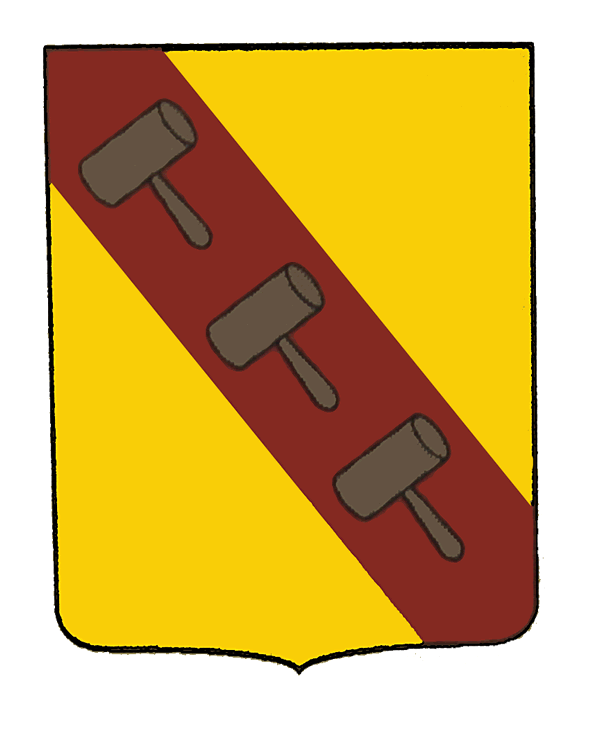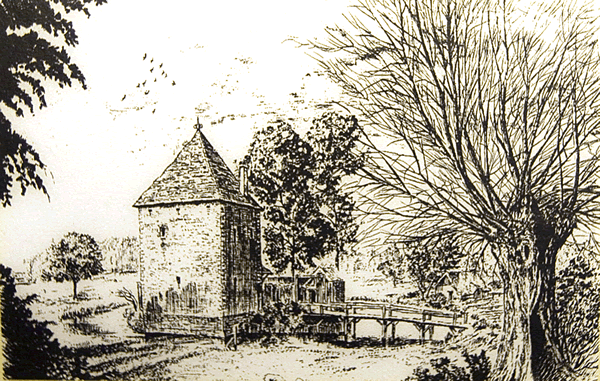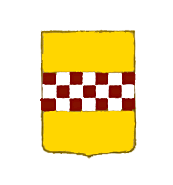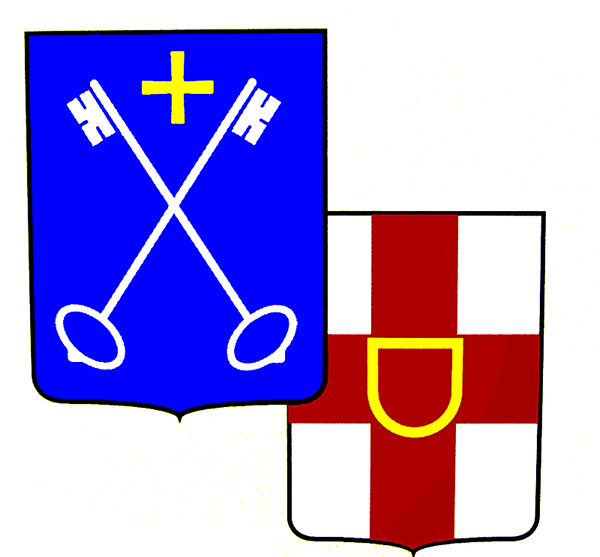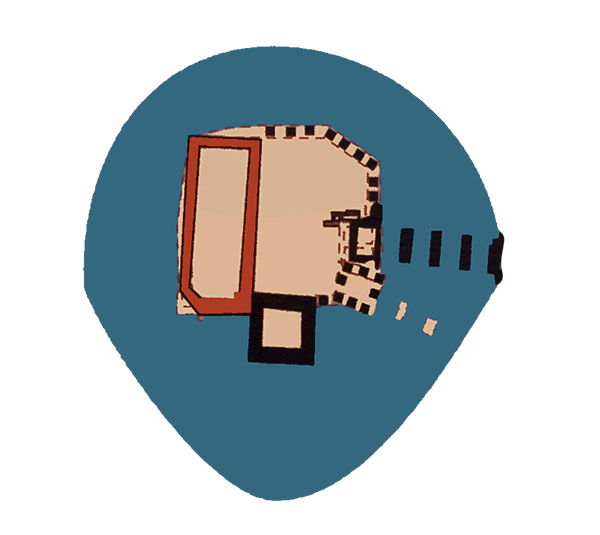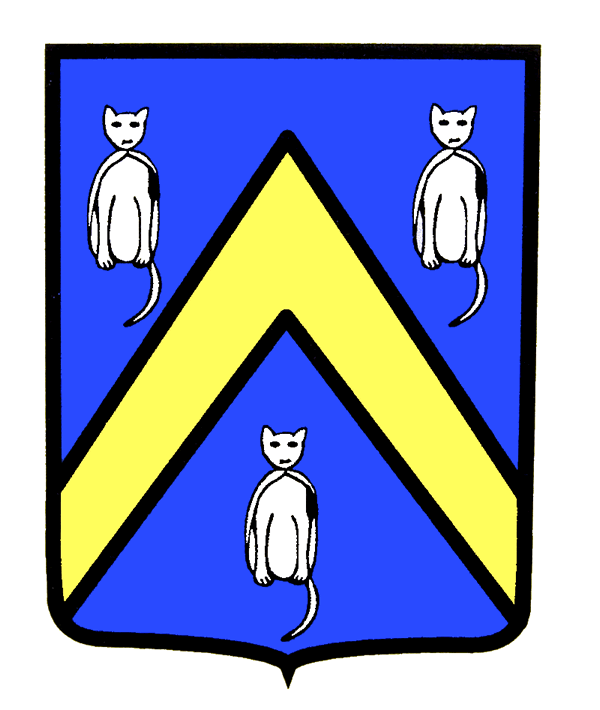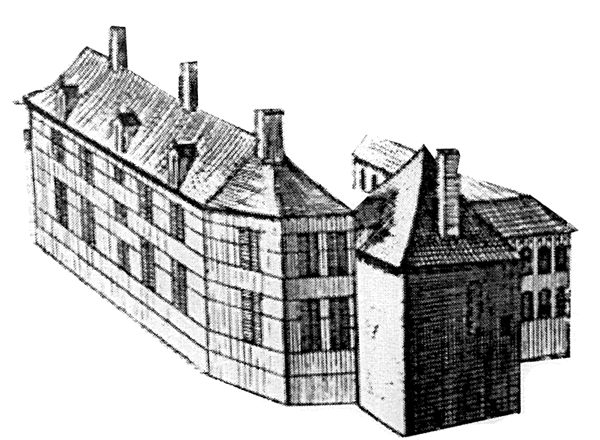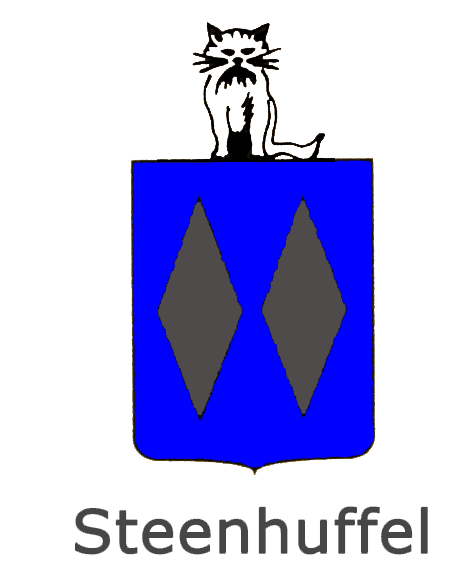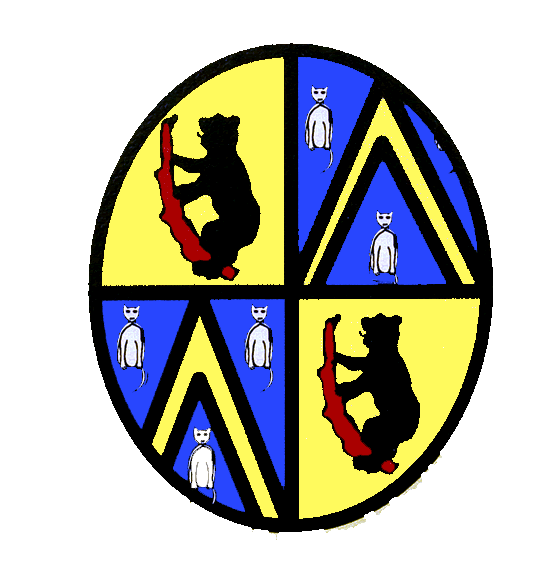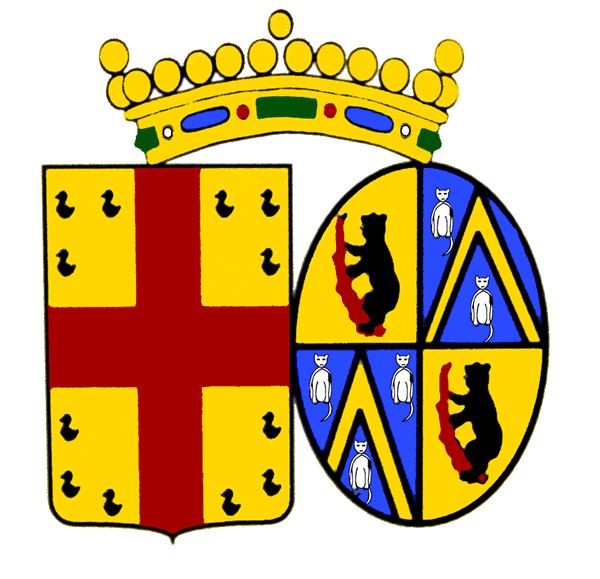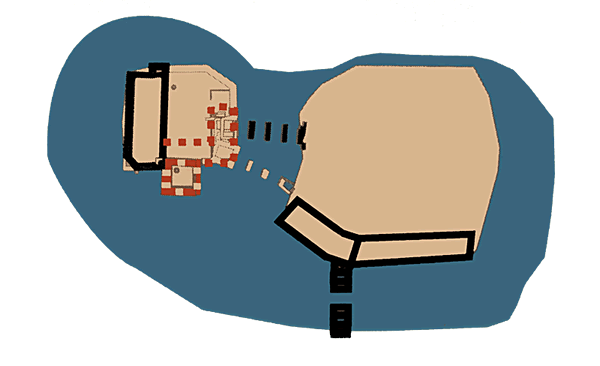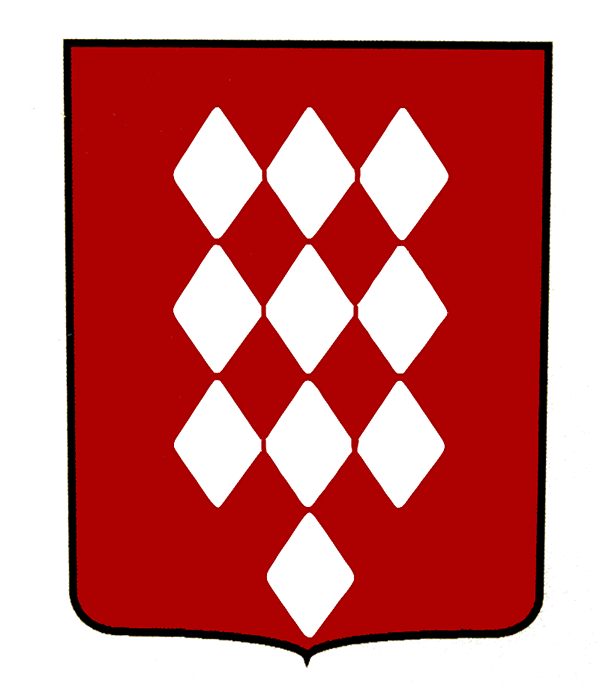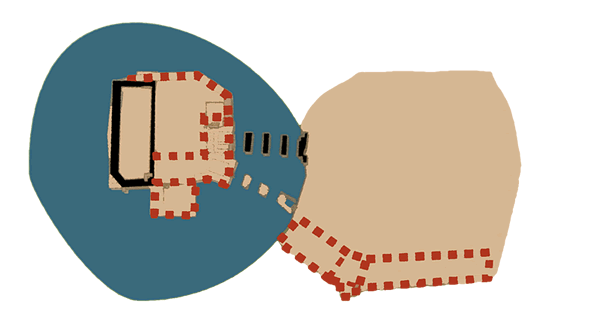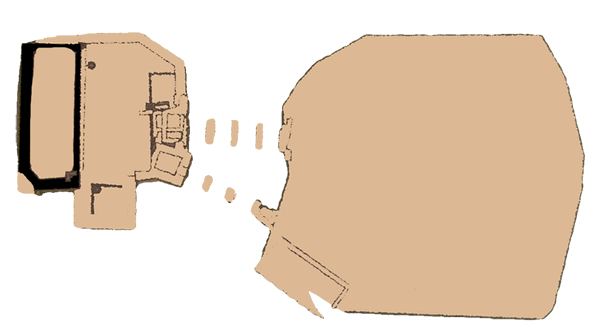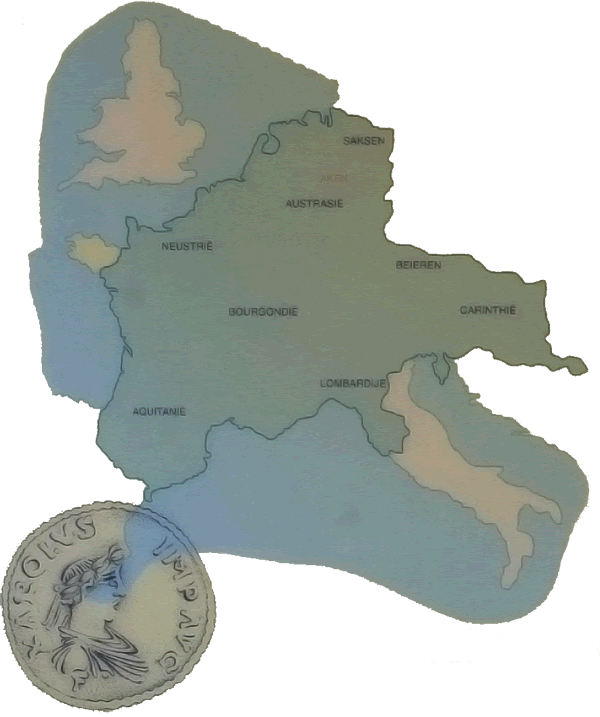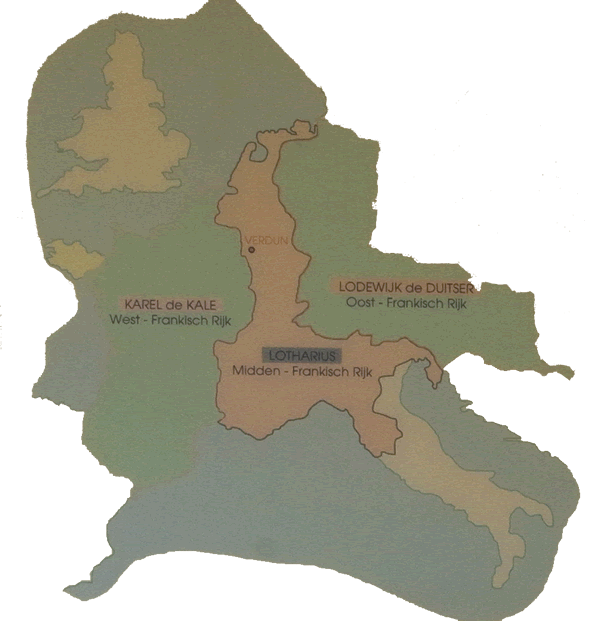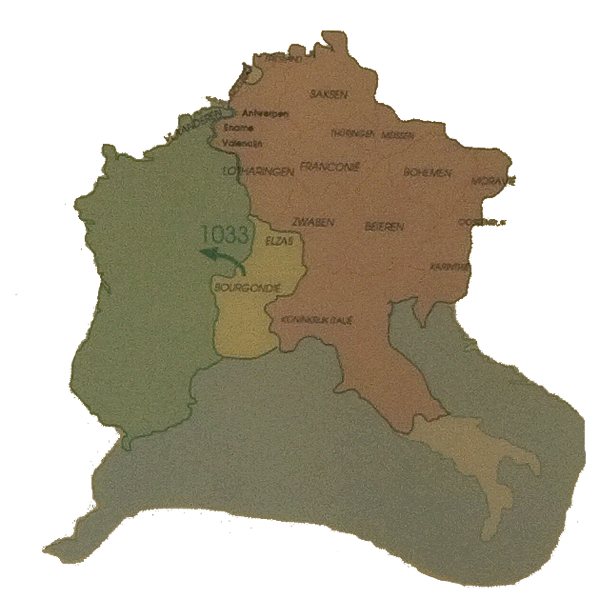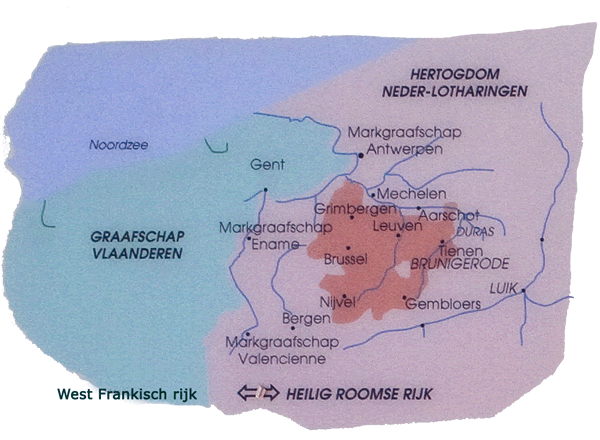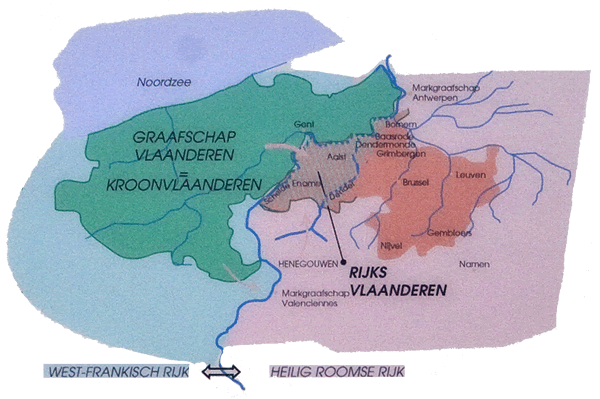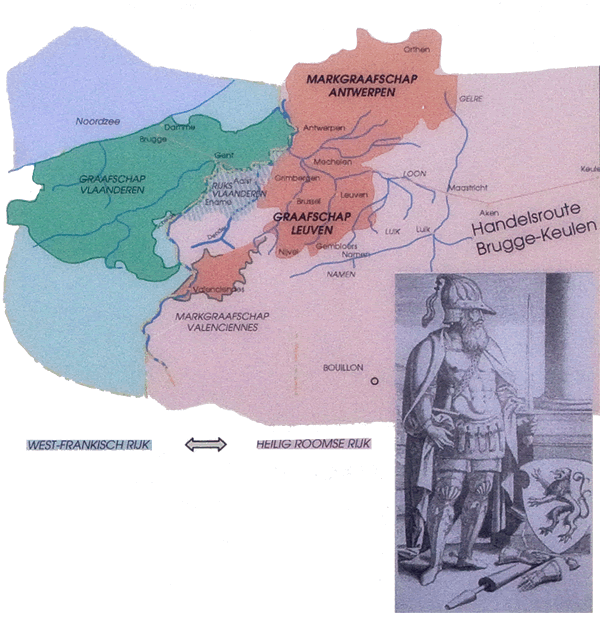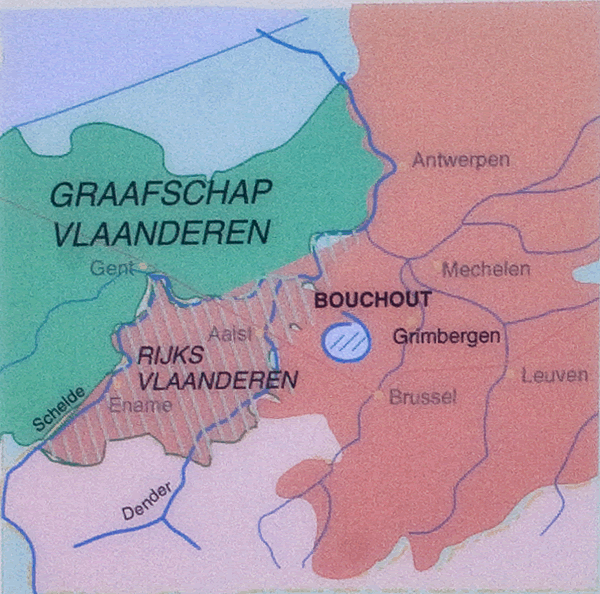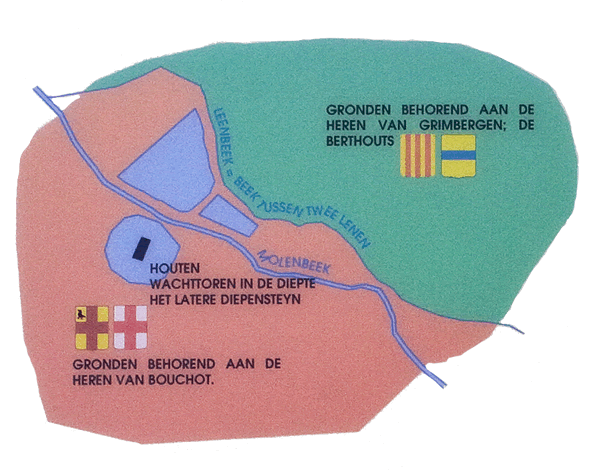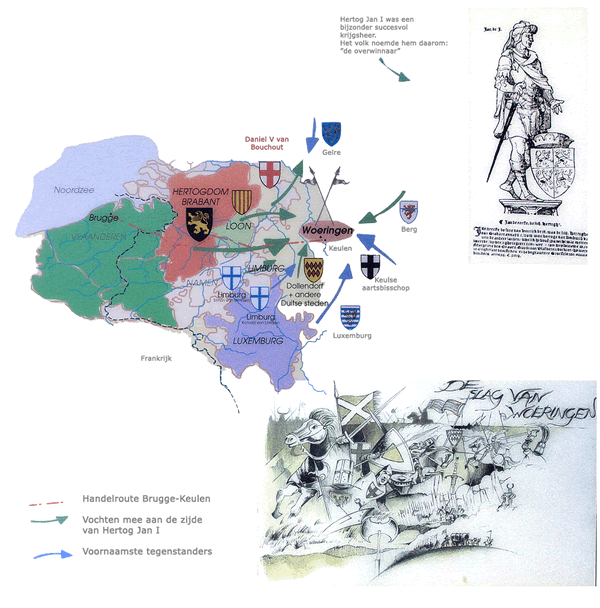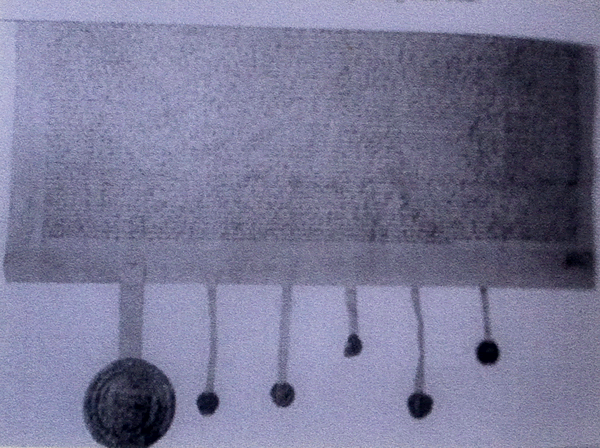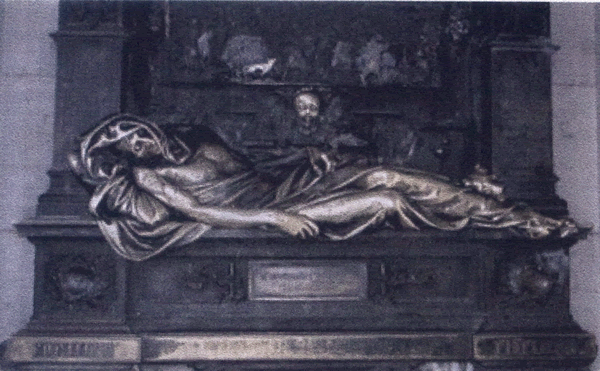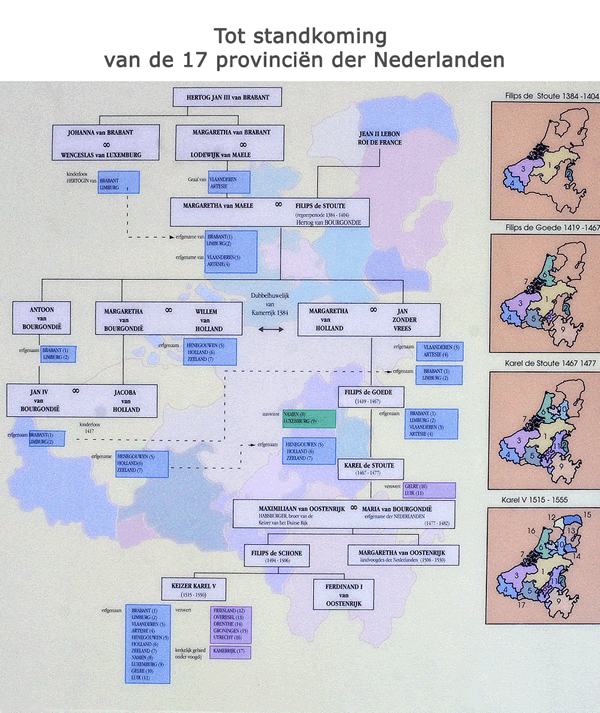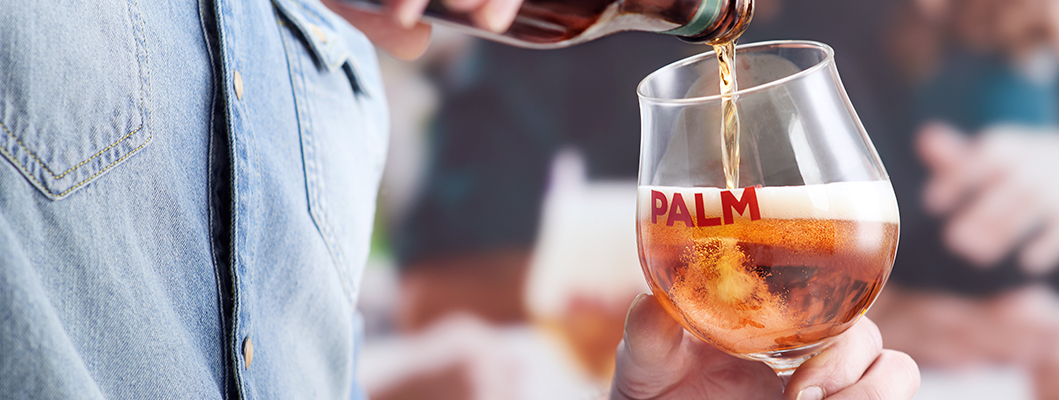
Lords & owners of Diepensteyn
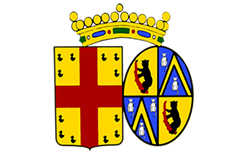
Diepensteyn Domain has in the past been inhabited by various noble families. All of them have contributed to the construction or dismantling of the domain. Read here about the different families that have owned Diepensteyn.
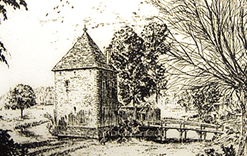
In 1147 there was only a timber watchtower on the site where Diepensteyn Castle now stands. Over the centuries it was expanded by the different owners and partially demolished on a number of occasions. Here is a summary of the development of the building phases from 1147 to the present day.

The owners of Diepensteyn Domain influenced its development and so too the domain's appearance.
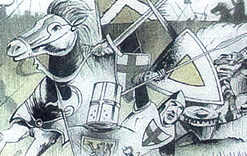
Besides their contribution to the development of Diepensteyn domain, the owners of Diepensteyn domain and their kinsfolk also played a significant part in shaping the Duchy of Brabant and western Europe.

Wouter van CRAYNHEM, later called van WANGE and then van BOUCHOUT, receives large estates in a wide area surrounding Brussels from the Duke in 1147.
Gillis III van WANGE X Catherina van EPPEGEM (cit. 1256) in Steenhuffel
Daniel V van BOUCHOUT, circa 1278 in Steenhuffel
Diepensteyn first mentioned in 1290
Egidius van BOECHOUT and Paridanus van BOECHOUT (cit. 1321)
Jan van BOUCHOUT (+1333) X Elisabet TAEYE X Arnout van HELLEBEKE after 1333
Daniel V van BOUCHOUT (cit. after 1333) - Agnes van HELLEBEKE X Ph. van AXEL
Daniel VII van BOUCHOUT (+after 1369) - Maria van HELLEBEKE X Geeraerd van VORSSELAER
Gillis van BOUCHOUT (cit. 1375) - Geeraerd van VORSSELAER (+1380)
Daniel VIII van BOUCHOUT (+1442)
Joanna van BOUCHOUT (+1447)
Daniel IX van BOUCHOUT (+1465)
Margaretha van BOUCHOUT (+1472) - Sander - Daneel - Jan - Glauden - Joris - LIJSBETTEN X Evrard van der MARCK (+1496) - Jean de COTTEREAU (purchase)
Daniel X van BOUCHOUT (1495 - 1497)
Anna van BOELARE - BOUCHOUT (+1472) X Alvaro I de ALMARAS
(purchased 1517)
Alvaro II de ALMARAS (+1550)
Philips de ALMARAS (+1571)
Maria & Clara de ALMARAS (+ after 1573) X Domingo CYMON
Anna CYMON (purchased in 1573) X Jan van der LAEN
François de VALLENGHIEN (purchased 1595)
Pierre MICAULT (purchased 1598) (+1622)
Frédérik MICAULT (+1632), Lord of Steenhuffel
Madeleine-Livine MICAULT(+1672) X Jan Kesseler
Isabella KESSELER (1672) X Eugeen Ambrosius van MALDEGHEM
Count of Steenhuffel (+1693)
1690 County of Steenhuffel
Count Jean Dominique de MALDEGHEM (+1747)
Count Charles de MALDEGHEM (+1783)
Count Joseph de MALDEGHEM (+1809)
Henriette de MALDEGHEM (+1866) X Charles de LALAING
Charles de MALDEGHEM (1809)
Maximilien de LALAING (+1881)
Charles de LALAING (+1919)
Jaques de LALAING (+1969)
Ferry de LALAING & Ariane de LALAING
Emiel DE BOECK X Rachella ROBBERECHTS (1960 purchase of pre-farmhouse)
PALM Brewery nv represented by
Alfred VAN ROY X Aline VERLEYEN purchase the entire estate from the DE BOECK and de LALAING families in 1988
RESTORATION (1993-95)
SPURRED ON BY JAN TOYE, owner and director of PALM Belgian Craft Brewers n.v., which is also home to the stud farm and the Belgian draught horse.
1147
timber watchtower
1290
stone donjon with timber palisade

1357
"water" castle

1460
new gatehouse and drawbridge

1517
demolition of castle wall, construction of idyllic castle with new bridge

1616
renovation and extension with gallery
1675
construction of gatehouse, coach house, stables

1719
demolition of donjon and outbuildings

1825
demolition of gatehouse, coach house and stables

1960
farmhouse
1993-1995
restoration
1139 - 1159
Grimbergen war - Van Crainhem, followed by Van Wanghe, later Van Bouchout
Wouter van Crainhem is the loyal vassal of Godfrey I, Duke of Brabant, during the Grimbergen war against the Berthouts, Lords of Grimbergen, who refuse to pay homage ("leenhulde") to the Duke. The vassals still have the task of stopping the Berthouts' urge for expansion even after the war is over. The Leen brook in Steenhuffel (brook between two fiefs) acts as a boundary that must not be crossed.
1147 - 1550
Estate of the Lords of Bouchout from the House of Crainhem
Wouter van Crainhem was trouwe vazal van Godfried I, Hertog van Brabant, tijdens de Grimbergse oorlog. Om de expansiedrang van de berthouts, heren van Grimbergen, te stoppen krijgt hij het domein Bocholt ( later Bouchout) te Wemmel en gronden te Steenhuffel. Daniel V van Bouchout heeft naast het kasteel van Bouchout ook Diepensteyn te Steenhuffel en koopt in 1313 de heerlijkheid van Humbeek van Floris Berthout van Mechelen. Door het huwelijk met Arnhout van Hellebeke enerzijds komen de Bouchouts in het bezit van Loenhout Popendonck Van Ariane van Reigersvliet erven zij Boelare. Al deze bezittingen groeien uit tot riante kasteeldomeinen. De afstammelingen van de Bouchouts blijven meer dan 3 eeuwen eigenaar van Diepensteyn, dat steeds verder uitgebouwd wordt.
1200
Period of construction of the Diepensteyn "water" castle
Daniel V van Wanghe (van Bouchout) Daniel V fights alongside John I, Duke of Brabant at the Battle of Worringen in 1288 in order to safeguard the prosperous trade route with Cologne. He is handsomely rewarded for this and promoted to the highest-ranking office: Senescallus Brabantiae (Lord Chief Justice of Brabant). There are constant conflicts with Flanders. He is instructed to build a stronghold in Meise as a strategic zone skirting the Flemish border and a stone donjon in Steenhuffel by the fiefdoms of the Berthouts (Lords of Grimbergen-Mechelen) who refuse to pay homage ("leenhulde") to the Duke.
1333
Van Hellebeke
Elisabeth Taye, widow of John of Bouchout (Humbeek-Diepensteyn section), marries Arnold van Hellebeke. She retains the beneficial ownership.
1356
Succession war in Brabant
Margaret of Flanders marries Louis of Male, Count of Flanders. Joanna of Flanders marries Wenceslaus of Luxembourg. WHO ACQUIRES BRABANT ?
John of Bouchout (Meise section) is one of the leading councillors of Joanna, Duchess of Brabant. He follows the Brabant army to Maastricht when the Count of Flanders, Louis of Male, attacks Brabant, taking part in its recapture in 1356, together with Everhart ’t Serclaes, and liberates the city of Brussels. In 1386 Joanna of Brabant concentrates her army at ’s Hertogenbosch. She presses on to the border fortress of Grave which has been occupied by the Count of Guelders. John of Bouchout leads the troops of the city of Brussels who recapture the Grave fortress.
Daniel VI of Bouchout (Humbeek-Diepensteyn section) During the Brabant succession war, Daniel VI of Bouchout refuses to pay homage ("leenhulde") to Louis of Male, Count of Flanders, who owns various enclaves in Brabant. He renovates Diepensteyn into a fully fledged "water" castle as part of the defensive zone against the aggressive Count of Flanders.
1376
Gilles of Bouchout
Gilles van Bouchout (Lord of Hellebeke)
Comes into possession of Diepensteyn in the division of 1376.
He marries Ariane van Reygersvliet, heiress of Boelare Castle, as a result of which the Van Bouchouts also become Lords of Boelare.
A great-granddaughter (5th generation) Anna van Egmont marries Willem de Zwijger (founder of the House of Orange-Nassau).
1427 - 1447
Daniel VIII of Bouchout
Requests that Pope Eugene honour Diepensteyn with a chaplaincy.
The Papal Bull of Foundation of 1437 gives permission to dedicate an altar to St Katharina and St Barbara.
1447 - 1466
Daniel IX of Bouchout
Son of Gilles van Bouchout. Viscount of Brussels. He inherits Diepensteyn in the division of 1447.
He constructs a new gatehouse and drawbridge.
He is a fervent devotee of tournaments and organises a lot of them at Diepensteyn.
He leads the Brabant army as the Burgundian king Charles the Bold is waging war against Louis XI of Monthiery. He falls in battle in 1466 at Charles the Bold's side.
In his will of 1460 he bequeathes Diepensteyn to his many illegitimate children.
1466 - 1482
Evrard van der Marck
Count of Arenberg
Margaret of Bouchout, daughter of Daniel IX, marries Evrard van de Marck, chamberlain of Charles the Bold.
He also fights in the Battle of Monthiery, where Daniel IX dies. His brother Willem I is a formidable warrior and is dubbed "the wild boar of the Ardennes".
A descendant of the Van der Marcks, Lamoraal van der Marck, is the commander of the Geuzen ("the Beggars") when Brielle is recaptured from the Spaniards in 1572.
Following the death of Charles the Bold in 1477, he is succeeded by Maximilian of Austria. Evrard sides with the Flemings and Louis IX of France.
In 1482 Maximilian takes away all his rights in Brabant, granting them to Daniel X of Bouchout.
1482 - 1517
Daniel X of Bouchout
Daniel X, grandson of Gilles, is granted rights to Diepensteyn by Maximilian of Austria.
He must act in a military capacity in his own castellany in Geraardsbergen and Aalst. This creates financial problems and he has to sell Diepensteyn in 1517.
1517 - 1595
Alvaro I de Almaraz
In 1509 Anna van Bouchout, called Van Boelare, marries Alvaro de Almaraz, a Spanish merchant who has settled in Antwerp.
In 1517 Diepensteyn is sold by legal process and is granted to Anna and Alvaro.
Alvaro I has the "water" castle renovated into an idyllic castle. It ceases to have a military function. The castle wall is demolished and the building material is used to construct the new castle wing next to the donjon.
The Almaraz family ends the Bouchouts' era. The three generations of Almaraz have a major impact on Diepensteyn and Steenhuffel. They herald a new Golden Age for the region. Alvaro and Anna are depicted on the stained-glass window in the church at Steenhuffel (Our Lady of the Seven Sorrows from 1535. Their children are shown on the stained-glass window "The Holy Trinity" from 1552).
Anna Symon, “La belle heritière de Diepensteyn”, is the favourite of Cardinal Granvelle, by whom she has a son.
1595 - 1598
Francois de Vallenghien
Francois de Vallenghien buys the seigniory of Diepensteyn in 1595 and sells it on to Pierre Micault.
1598 - 1626
Pierre Micault
Pierre Micault, Lord of Indevelde (Eppegem, with Kattenhuis Castle), sheriff of the town of Lingen, knight in the order and member of the Secret Council, buys Diepensteyn in 1598.
He is the grandson of Jean Micault, treasurer of the Golden Fleece and of Lady Livine Cats.
In 1616 he has building materials transported from Lingen, which he uses to add a gallery to the castle. He renovates and alters the south wall of the main building.
He combines the chaplaincy of Our Lady of Sielmisse with that of Diepensteyn and builds the chapel in 1618.
1626 - 1632
Frederick Micault, Lord of Steenhuffel
Frederick Micault inherits Diepensteyn from his father and buys the title of Lord of Steenhuffel from Philip IV of Spain. Consequently, he is allowed to place a cat, the symbol of the Micault family, above the Steenhuffel coat of arms.
Nicolaas Micault
Nicolaas is a knight of the Golden Fleece. He is delegated by the Archduke Albert and his wife Isabella to broker a 12-year ceasefire with the United Provinces.
1633
Madeleine Livine Micault
FMadeleine inherits Diepensteyn in 1633.
She marries Jan Kesseler. Her daughter Isabelle marries Eugeen Ambrosius van Maldeghem.
1672 - 1693
Eugeen Ambrosius van Maldeghem
Isabella Kesseler marries Eugeen Ambrosius from the renowned Van Maldeghem line of knights who have continuously stood at the side of the Count of Flanders, followed by the Burgundian dukes, the Spanish kings and the Austrian kaiser since the first crusade.
They have a gatehouse, stables and coach house built on the hennery.
1685
County of Steenhuffel-Maldeghem
Charles II, the last King of Spain from the House of Habsburg, confers the title of count on Eugeen Ambrosius van Maldeghem, who chooses to link the title to Steenhuffel, thus creating the County of Steenhuffel-Maldeghem.
Eugeen Ambrosius van Maldeghem dies in 1693. He is buried in the crypt of the church at Steenhuffel.
1693 - 1747
Jean Dominique van Maldeghem
Jean Dominique van Maldeghem becomes the second Count of Steenhuffel.
In 1719 Jean Dominique instructs his estate manager, Theodoor Cornet, to raze the donjon, staircase, old kitchen and gallery to the ground and to stack the stones nicely.
Jean Dominique excavates huge lakes and lays out an Italian pleasure garden. In 1720 Theodoor Cornet, Jean Dominique's estate manager, has the large bridge repaired, incorporating two memorial stones. Theodoor Cornet is also the brewer at the Cornet-De Hoorn inn which will subsequently expand into PALM Brewery. In 1733 Jean Dominique van Maldeghem is made lieutenant-field marshal by the Austrian kaiser and receives many diplomatic orders. Upon his death in 1747 he is laid to rest in the crypt of the church at Steenhuffel.
1807 - 1960
Charles G. De Lalaing: period of decay
Countess Henriette van Maldeghem marries Count Charles de Lalaing in 1809:
one of the most influential noble families in Belgium. The De Lalaing family frequents royal and imperial courts and boasts ministers, ambassadors, privy councillors to monarchs, military leaders, and the list goes on. They are members of the Order of the Golden Fleece and of the Order of Malta.
In about 1825 the buildings around the entrance gate are demolished, as are the stables, and Diepensteyn is downgraded to a farmhouse. Some of the ramparts are filled in.
1960 - 1988
De Boeck-Robberechts: from castle to farmhouse
Emiel de Boeck and Rachele Robberechts, tenants of the land, buy "the castle". They later build a new dwelling and additional stables. The decayed remnants of Diepensteyn continue to be used as a barn and storage area. The ramparts continue to be filled in.
1988 - 1995
PALM Brewery - period of restoration
1988
Brouwerij PALM NV, represented by its managing directors, Alfred van Roy and Aline Verleyen, purchase "the castle" from the De Boeck family and the surrounding land from the De Lalaing counts.
1993 - 1995
In 1993 the restoration work is started by Jan Toye. During the works all the old foundations are dug up. The plans are modified so that the new buildings and bridges are constructed on the old foundations. Photo 1 - Further details on the restoration
768 - 814
Charlemagne
Charlemagne reigns over an empire that covers nearly all of western - and part of central - Europe.
He expands the empire of Pepin the Short to include Lombardy, part of Spain, Carinthia and Saxony. The unified empire is bound together by Christianity.
In 800 Charlemagne is crowned Emperor of the Western Roman Empire. He continues to expand his power, demanding that every free man swear an oath of allegiance to the Emperor.843
Divided empire
Charlemagne is succeeded by Louis the Pious.
A conflict between his sons results in the Carolingian Empire being divided into three regions following the Treaty of Verdun: Eastern Francia (Louis the German), Middle Francia (Lothair) and Western Francia (Charles the Bald).
876 - 1033
Holy Roman Empire
876: Following the Battle of Andernach, Lotharingia becomes part of Eastern Francia.
973: Emperor Otto I the Great reorganises his empire. As a stronghold against the powerful Counts of Flanders, he proclaims
- Taxandria as the MARGRAVIATE OF ANTWERP
- Ename as a MARGRAVIATE
- Valenciennes as a MARGRAVIATE
977 - 1006
A lord "The Count of Louvain" starts to build up his power.
Lambert I, son of Reginar III of Hainaut, Count of Hainaut, gains possession of the County of Leuven in 977.
Following the death of his uncle Charles, Duke of Lotharingia in 1006, he inherits castles and large estates in the County of Brussels and Leuven. Lower Lotharingia is divided into many lordships or seigniories (heerlijkheden) which sometimes are more powerful than the Count of Leuven, such as Aarschot, Brunigerode, Duras and Grimbergen.
Lambert I marries the daughter of the King of France and receives the County of Uccle as a dowry..
1033 - 1034
Battle of Ename
The Count of Flanders, Baldwin V, crosses the Scheldt. He conquers Ename Castle, the area between the Scheldt and Dender in the territory of Dendermonde.
In 1056 he pays feudal homage (leenhulde) to the Emperor of the Holy Roman Empire for this territory. This is where the name Rijksvlaanderen, or Imperial Flanders, comes from.
1106
The Count of Brussels and Leuven becomes Duke of Lower Lotharingia.
The Duke of Lotharingia, Godfrey of Bouillon, goes on a crusade. The Emperor of the Holy Roman Empire installs a new strong man, Godfrey I, as a buffer against Flanders.
Godfrey I, called the Bearded, Count of Leuven, is given the title Duke of Lower Lotharingia and becomes the Margrave of Antwerp, formerly Taxandria.
1121 - 1128
The Bouchout territory owned by Godfrey I
1121: Godfrey I marries Clementia of Flanders, daughter of William of Burgundy and widow of Robert II, Count of Flanders.
1128: war breaks out between the new Count of Flanders, Thiérry of Alsace, and Godfrey I over Clementia's dowry located in Imperial Flanders.
Thiérry and Godfrey I reach an agreement: various enclaves are exchanged. Thus, Godfrey I gains possession of the territory of Bouchout.
1139 - 1159
Grimbergen war
The lords of Grimbergen, also called Berthout, refuse to acknowledge the Count of Meuven Brussels as their liege "as they had never recognised any lord other than the emperor".
The death of Godfrey I leaves a power vacuum. The Berthouts take advantage of this to start an open war against the Count of Leuven and Brussels: the Grimbergen war.
To halt the Berthouts' urge for expansion, faithful followers of the House of Leuven and Brussels obtain land around the Berthout territory.
Thus, in 1147, Wouter van Craynhem obtains the Bouchout estate in Meise and land in Steenhuffel. It is highly likely that Wouter constructed a timber watchtower there along the Molenbeek in order to curb the Berthouts' sphere of influence.
(= first building in Diepensteyn)
1288
Battle of Worringen
At the request of the Count of Berg, Duke John I of Brabant lays claim to the County of Limburg. He travels to the Rhine with the Brabant knights and armies of Leuven, Brussels, Antwerp, Tirlemont, Jodoigne and Nivelles, plus the troops of Loon, Liège, Kleve and Gullik.
At the request of the citizens of Cologne, the siege begins of the Archbishop of Cologne's fortress at Worringen on the Rhine as he had levied an excessive toll on trade.
The people of Limburg are divided: one party fights under Konrad of Landau with Cologne against Arnold and Simon van Witthem who support Brabant.
Daniel V of Bouchout defeats the Count of Guelders, which turns the tide for John I.
This victory at Worringen leads to control of the Bruges-Cologne trade route, the capture of the County of Limburg and Guelders, and the neutralisation of Liège. A new order emerges and trade between the Scheldt and the Rhine flourishes.
A period of prosperity begins in Brabant.
Warriors and lords who offered assistance to John I of Brabant are handsomely rewarded.
Daniel V of Bouchout is elevated to the highest office in the Duchy: SENESCALLUS BRABANTIAE (Lord Chief Justice of Brabant).
1356
Joyous Entry
John III of Brabant dies in 1355. His estate passes to his daughter Joanna of Brabant, married to Wenceslaus of Luxembourg.
His younger daughter Margaret of Brabant, married to Louis of Male, Count of Flanders, is dissatisfied about the arrangement that has been entered into and employs every possible means to try and undermine the authority of Joanna and Wenceslaus.
To gain allegiance from the Brabanters, Wenceslaus and Joanna proclaim "THE JOYOUS ENTRY" on 5 January 1356. As a result, the bye-laws and rights of the towns are confirmed and expanded.
The following individuals also affix their seal to this document:
- Diederik van Hoerne
- Hendrik Berthout
- Geeraerd van Vorsselaer
- John of Bouchout
- Bernard van Bornival
1356
Flemish occupation of Brabant and Brussels
1356: Louis of Male, Count of Flanders, descends upon Brabant and conquers the entire territory.
John of Bouchout, one of Joanna of Brabant's most eminent councillors, follows the Brabantian army to Maastricht.
With the help of the Limburg knights and the Count of Loon, under the stewardship of Everard ’t Serclaes, they reconquer the Duchy and Brussels.
1384 - 1555
The 17 provinces of the Netherlands: come about as a result of marriage policy.
The increasing power of the towns undermines the nobles' authority. It becomes imperative to concentrate the nobles' strength. Traditional rivals are united in a greater structure of authority as a result of marriage policy.
Margaret of Brabant, Joanna's sister, married to Louis of Male, Count of Flanders.
Their daughter Margaret of Male marries Philip the Bold (Duke of Burgundy ).
Joanna of Brabant dies without issue. Her estate, Brabant and Limburg, passes to Margaret of Male. Thus, Flanders, Artois, Brabant and Limburg come under the Burgundians' authority.
The double marriage of Cambrai also brings the House of Holland under the Burgundians via a legacy.
The foundations of the 17 provinces of the Netherlands are laid.

